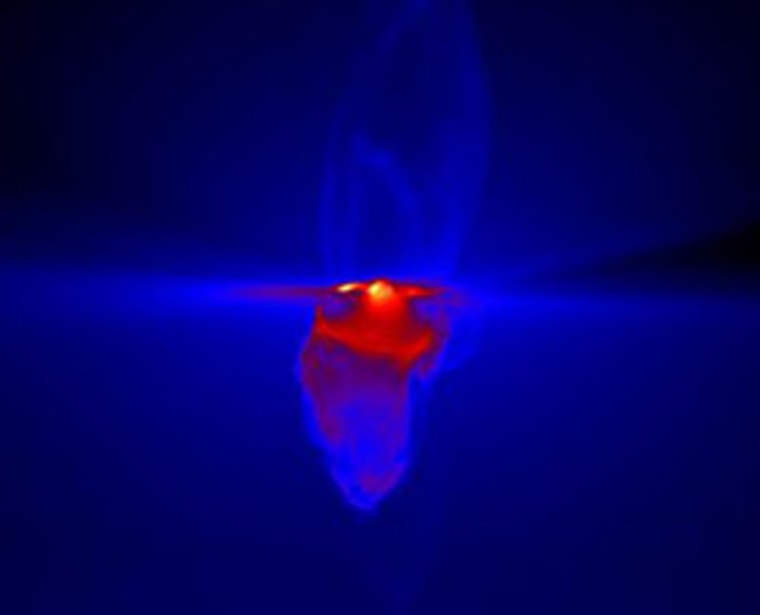The birth of the largest stars in the universe have always posed a conundrum for astronomers: Massive stars are created by sucking in vast amounts of gas, but somehow they do it without blowing away their gassy feedbags when they ignite early on.
Now astronomers have found out the secret: The gassy nebulae where these stars are made are filled with extra concentrated sheets and filaments of materials packed and ready to eat like cosmic jars of baby food. All a bouncing baby mega star has to do is wade through these hydrogen filaments to bulk up.
But here's the kicker: These stellar cafeterias were created by none other than the same very large stars blasting gases away.
"It's been known since the 1980s that the radiation (of jumbo stars) would kick the gas away spherically," essentially creating a bubble of hot gas pressing outwards, explained Mordecai-Mark Mac Low, curator in the Department of Astrophysics at the American Museum of Natural History. Mac Low is a co-author of a paper studying the matter in the latest issue of The Astrophysical Journal.
But not until now has anyone succeeded in creating a computer simulation that reproduced the creation of a cluster of large stars and the effects of the stars' powerful light.
Slideshow 12 photos
Month in Space: January 2014
It works like this: Stars with masses more than 100 times that of our sun have extra hot surfaces and pump out a lot of ultraviolet light. So much UV, in fact, that the light can strip electrons off (ionizing the gas) of hydrogen atoms and heat the ionized gas to 10,000 degrees Celsius. That creates a lot of pressure which blasts material away from the big star.
The new model shows that while the hot ionized gas does fly away from the stars, that same ionized gas shields and concentrates cooler gas into the sheets and filaments. So when a giant star stumbles into a filament, there's ample eats.
"This model is a significant step forward, but a lot of questions remain," said astrophysicist Mark Krumholz of the University of California at Santa Cruz's Lick Observatory.
Those questions are pretty important, Krumholz said, because despite being the minority stars in the galaxy, large stars are important.
"For every bright star you see in the sky there are millions of dwarfs," said Krumholz. Dwarfs like our sun are by far more prevalent, though they are much harder to see. “Massive stars are incredibly rare, but produce most of the energy in a galaxy. So if you want to understand how galaxies work, you have to understand massive stars."
But that's not the only reason massive stars are important, according to the new simulation.
"The other thing that happens is those filaments create other stars," Mac Low told Discovery News.
So a better understanding of massive stars could help us discover the origins of smaller stars as well.

